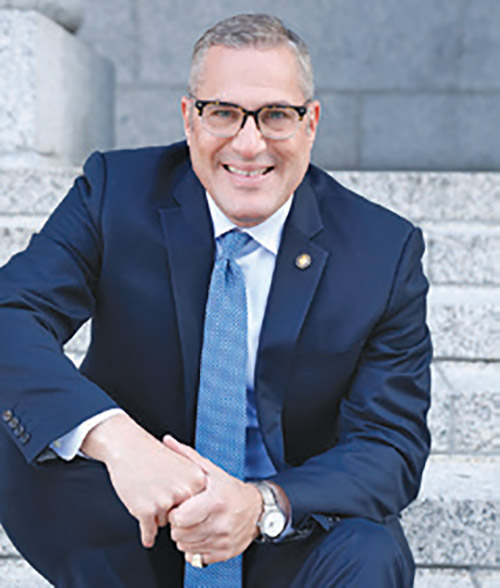
Extraordinary. It’s not a word that we see a lot of these days. And yet, anyone who works in fashion encounters the extraordinary daily. That’s because the industry’s ranks are filled with singularly talented creative professionals who come from around the globe to work in a variety of jobs, all facing the same challenge: Immigration. And in most cases, their way in is through the O visa, which is reserved for foreign workers with demonstrably “extraordinary ability.” While the path to establishing this ability has always been something of a challenge, we are seeing trends in immigration that have made obtaining an O visa harder than ever, threatening not only careers, but the reputation of the U.S. as the first destination for the world’s best and brightest.
When Congress introduced the O visa under the Immigration of Act of 1990, it was effectively codifying the impossible. That’s because the central premise of the O visa is that it is possible to identify “extraordinary” talent through the receipt of a major award like a Nobel Prize or an Oscar, or by satisfying specific evidentiary criteria. That ability can be boiled down to regulatory arithmetic may seem anathema to the American concept of individuality, but that’s exactly how United States Citizenship and Immigration Services (USCIS) determines who may (or may not) enter the country to provide work as extraordinary individuals.
Because the elements of the extraordinary are different for, say, a data scientist and a footwear designer, the O is broken into different categories – the O-1A, which recognizes extraordinary ability in the sciences, business, athletics, and academics, and the O-1B, reserved for the arts. Both require a foreign worker to submit evidence that satisfies 3 categories from a specific list (8 for the O-1A, 6 for the O-1B). While the O-1B criteria are intended to be representative of the kind of evidence indicative of meaningful achievements in creative professions, such as a history of starring roles in distinguished productions or magazine articles about an individual in major publications, there is still a burden to establish that an alien has truly achieved distinction in the field that places them “substantially above” what is ordinarily encountered. At least, that’s how things used to be.
In recent years, immigration attorneys who regularly secure visas for creatives like fashion designers, models, and photographers have experienced an unprecedented level of push-back from immigration authorities. Evidence that previously met the regulatory standard is now frequently disqualified through narrow technicalities or in some cases simply ignored. Industry standards are also routinely disregarded, such as when an itinerary showing three-years’ worth of contracted employment is required, even though short term engagements are common throughout the fashion industry. The reasoning behind these challenges, typically communicated by USCIS after an application is submitted via the dreaded “Request for Evidence,” is often labored, inaccurate, and frustratingly terse.
What does this mean for the future of fashion? In the short term, delays in the issuance of visas as attorneys scramble to adjust to trends in review by USCIS. Long term it could lead to widespread disenfranchisement, with creative talents deciding that the bar to entry to the U.S. is too high, skipping New York and Los Angeles in favor of cities like Paris or Shanghai.
All is not lost, though. As the tides change politically, we will undoubtedly see new approaches and ideas for immigration, particularly as it applies to extraordinary individuals. Immigration attorneys are also adapting, and we are increasingly using the same kind of creative skills displayed by our clients to present compelling stories that can overcome bureaucratic cynicism. Ultimately it will come down to the industry itself to decide what – and who – it wants to look like. Fashion is more than just sartorial contrivance – it’s a mode of communication, a means of creative expression, and a cultural force that touches every aspect of the arts. It’s also a multi-billion dollar industry that is made up of some of the most talented and influential individuals in the world. With time and effort, we can show the world that America is a home for the extraordinary, no matter where they come from.
By Michael Wildes
Michael Wildes is the mayor of Englewood, New Jersey, and the author “Safe Haven in America: Battles to Open the Golden Door.” He is a former federal prosecutor and an adjunct professor of immigration law at the Benjamin N. Cardozo School of Law.










